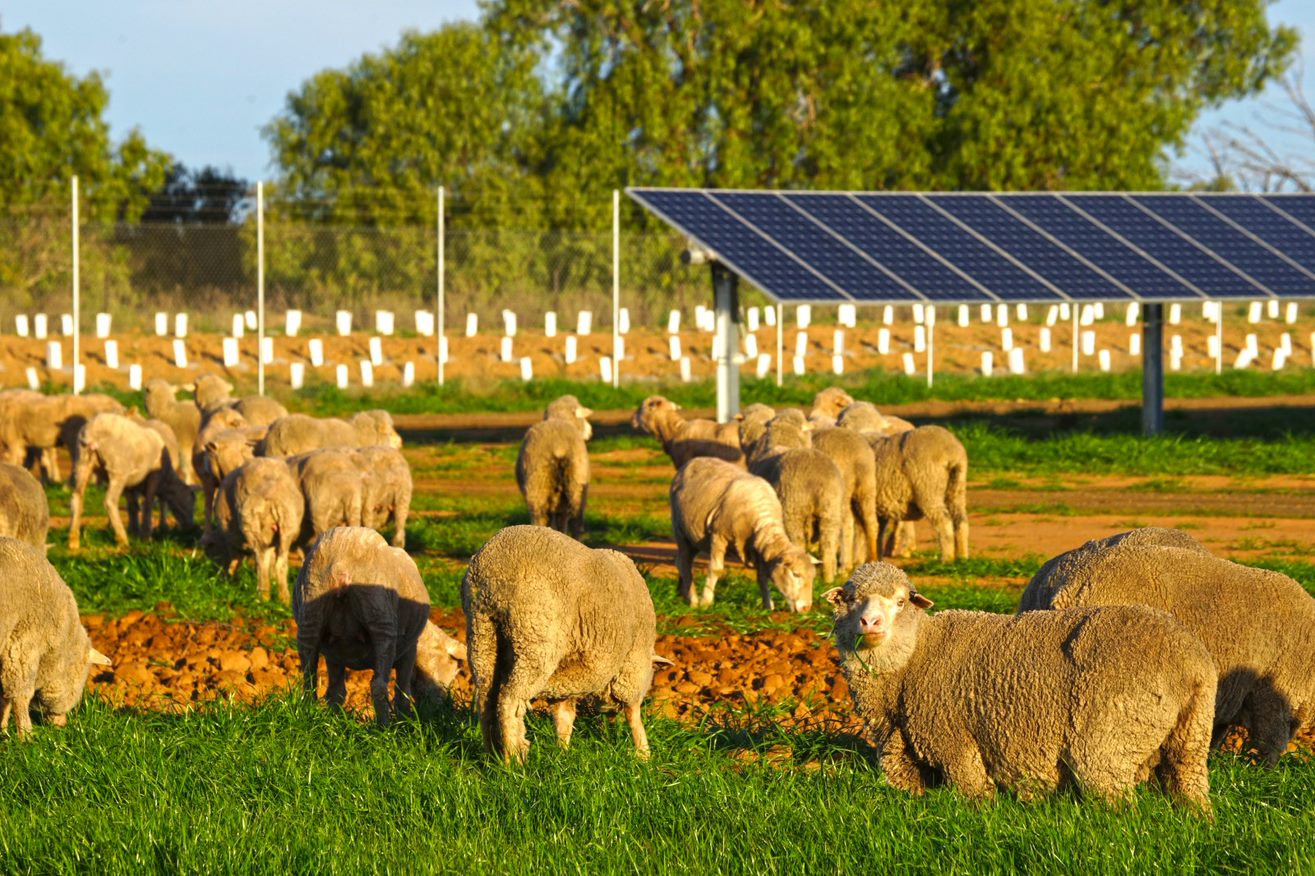In the rural north of Victoria, just 20km from the agricultural hub of Shepparton, the Numurkah Solar Farm is a trailblazer in renewable energy. It’s an inspiring example of rural and regional communities playing a critical role in the energy transition for Australia.
Owned and operated by Neoen Australia, Numurkah Solar Farm is an agrisolar project, combining sheep farming with the day-to-day operation of a solar farm.
Over 515 hectares, merino sheep graze happily amongst photovoltaic solar panels. Those panels feed 255,000 megawatt hours of energy into the grid every year, the equivalent of powering 51,000 homes.
Lisa Stiebel, Head of Communications and Engagement for Neoen Australia, describes it as a win-win solution for both farming and clean energy. The early days of exploring agrisolar pioneered unexpected benefits for both businesses.
“What we found during early trials on another project in Dubbo was that even during drought conditions, there were green strips of grass that ran in straight lines under the leading edge of the solar panels,” she says.
“It turns out that because the solar panels sleep at an angle overnight, they accumulate the dew moisture which drips down to irrigate the grass beneath. This meant the farmer could continue to have sheep grazing long beyond what would normally have been possible.”
There are multiple benefits to the solar farm in having sheep grazing; the plant has an obligation to keep vegetation levels low to reduce fire risk. Mowing and pesticide use is no longer required to the same extent.
A local sheep farmer now works closely with the site supervisor each day to move the flock around the property, keeping grass levels down and the sheep well fed.
For the sheep farmer, there are other benefits such as the shade provided for sheep on hot summer days underneath the panels improving wool quality, as well as protection from rain and hail in lambing season. The farm also has a security fence around its perimeter, protecting the flock against predators such as foxes.
In recent years, nearby farming towns that once thrived have been struggling to stay afloat. The establishment of the Numurkah Solar Farm has brought much-needed income and livelihood. Over 300 people were employed during the construction of the farm and today six local employees hold full-time permanent positions. For some it has meant the ability to return home from fly-in-fly-out jobs in other states.
“During construction, there was such a buzz in town, with cafes doing great business, and local supply companies getting the chance to upskill and build capacity,” Lisa says.
“Now we’ve seen families return to the area for long term, good quality jobs.”
The farm also runs an annual $15,000 Community Benefit Fund which sees money put towards community-building initiatives in the surrounding region.
As one of Victoria’s largest solar farms, Numurkah Solar Farm provides renewable offsets to the Melbourne tram network as part of the Victorian government’s Solar Trams initiative. The farm also has an agreement to supply power to the Laverton Steel Works.
The Numurkah Solar Farm was accredited by the Clean Energy Regulator in 2019 under the Large-scale Renewable Energy Target scheme. It will provide clean energy for the next 25-30 years.
In the meantime, the farm continues to drive research and collaboration in what is now a global movement toward agrisolar farms. In partnership with Agriculture Victoria, the farm is undertaking research into pasture and soil options as well as collecting data on cropping options.
“One of the major drivers for me is what the energy transition can deliver for regional communities,” Lisa says.
“We are in the early to middle stages of a massive transition. Most of the projects that will be built over the next 5-20 years will be built in regional and rural Australia. So, sharing benefits with local farmers, neighbours, and the communities surrounding our projects is something that we are committed to and feel really strongly about.”
The Clean Energy Regulator is running a series of case studies on the innovative approaches taken by power stations participating in our schemes. A power station that provides electricity from renewable energy sources (commonly wind, solar and hydro) may be accredited by the Clean Energy Regulator under the Large-scale Renewable Energy Target scheme.
Once a renewable energy power station is accredited, large-scale generation certificates (LGCs) can be created for the electricity generated - one LGC per megawatt hour (MWh). Numurkah Solar Farm has to date produced over 612,000 LGCs.

Sheep grazing amongst solar panels at the Numurkah Solar Farm, Shepparton, Victoria.